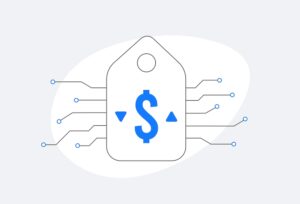CMOs are taking deep dives into massive, disparate data streams that should contain everything they need to know about customers and prospects. These rich data sources contain information ranging from channel and product preferences to past behaviors.
The end goal is simple: Know more about customer and prospects with the expectation of increasing relevancy and sales. The process, however, is not so simple: There is great potential for data analysis paralysis.
Studying the data can be meaningful, but if analysis doesn’t yield actionable strategies in real-time – the moment of the customer interaction – the analysis can easily become just another report that sits on a shelf.
Senior marketers must start by defining their goals when purchasing and managing big data. Good starter questions include “Why are we investing in it and what will we do when we have achieved an 'Aha!' moment? Can this insight be used across all channels of the business? Does the organization have the technology and capability to deploy takeaways in real time that will positively affect the consumer’s behavior?
Avoid Massive Data Purchases
Purchasing massive amounts of data also contains hazards. Marketers rarely use all the data they acquire when they get it, and the information begins to decay the moment it arrives.
Furthermore, most organizations lack the latest marketing technologies needed to synthesize the data and optimize it for real-time customer interactions — whether on the phone, online or at the point-of-sale.
Companies also often purchase unrelated data elements that address specific segmentation attributes or one-off campaign needs, but don’t have a way of meaningfully linking these data pieces for future use.
Pull Customer Data into Real-Time Interactions
Linking the right data in real time to customers and prospects is a critical component in driving relevant messaging and sales.Consider a large cable company that runs a customer service center. If the company is able to immediately identify and verify callers’ identities by mapping their landline or mobile phone number to their accounts, it can pull in key pieces of data about their location, lifestyle patterns, buying preferences, etc. to optimally respond to their inquiry, whether it is to dispute a billing error or upgrade service.
If the caller is not an existing customer, the company can immediately place the caller into a sales funnel.
Doing so gives organizations the ability to serve up tailored offers that meet each customer’s particular needs. A busy mother in a suburb is likely interested in different services than a high-earning single professional in a city.
These data uses also eliminate the need for customers to provide their contact information or wait to be manually routed to the right person during each interaction.
Get to Know Your Client Makeup
By working with the right data partner, organizations can use various data streams to guide prospects and customers toward services and products that fit their behaviors, patterns and lifestyles.
Consider the aforementioned cable company. It can use real-time customer data to capitalize on revenue opportunities by directing customers most likely to appreciate an upsell to appropriate call center reps, while directing customer service related callers to lower-cost automated processes.
Online or Offline: View Customers Through a Common Lens
Regardless of whether a company is communicating with a given customer through an online form, display advertising, a mobile app or via phone, each customer remains the same person. The key is to link marketing decisions to probabilities that can be modeled based on past preferences and behaviors of similar prospects and customers.
Senior level marketers must view customers through a common lens regardless of the touchpoint, and ensure that all marketing campaigns and interactions speak to them in a unified way. This includes having all prior customer interaction history available during subsequent interactions to ensure messaging continuity and to convey to the customer that a business truly “knows” them.
The key to data-driven success lies in making informed decisions regarding optimal approaches and content. Doing so means an organization will speak the customer’s language – not its own.
Paul McConville (paulmcconville@targusinfo.com) is senior vice president of sales & marketing, TARGUSinfo.

 Network
Network

